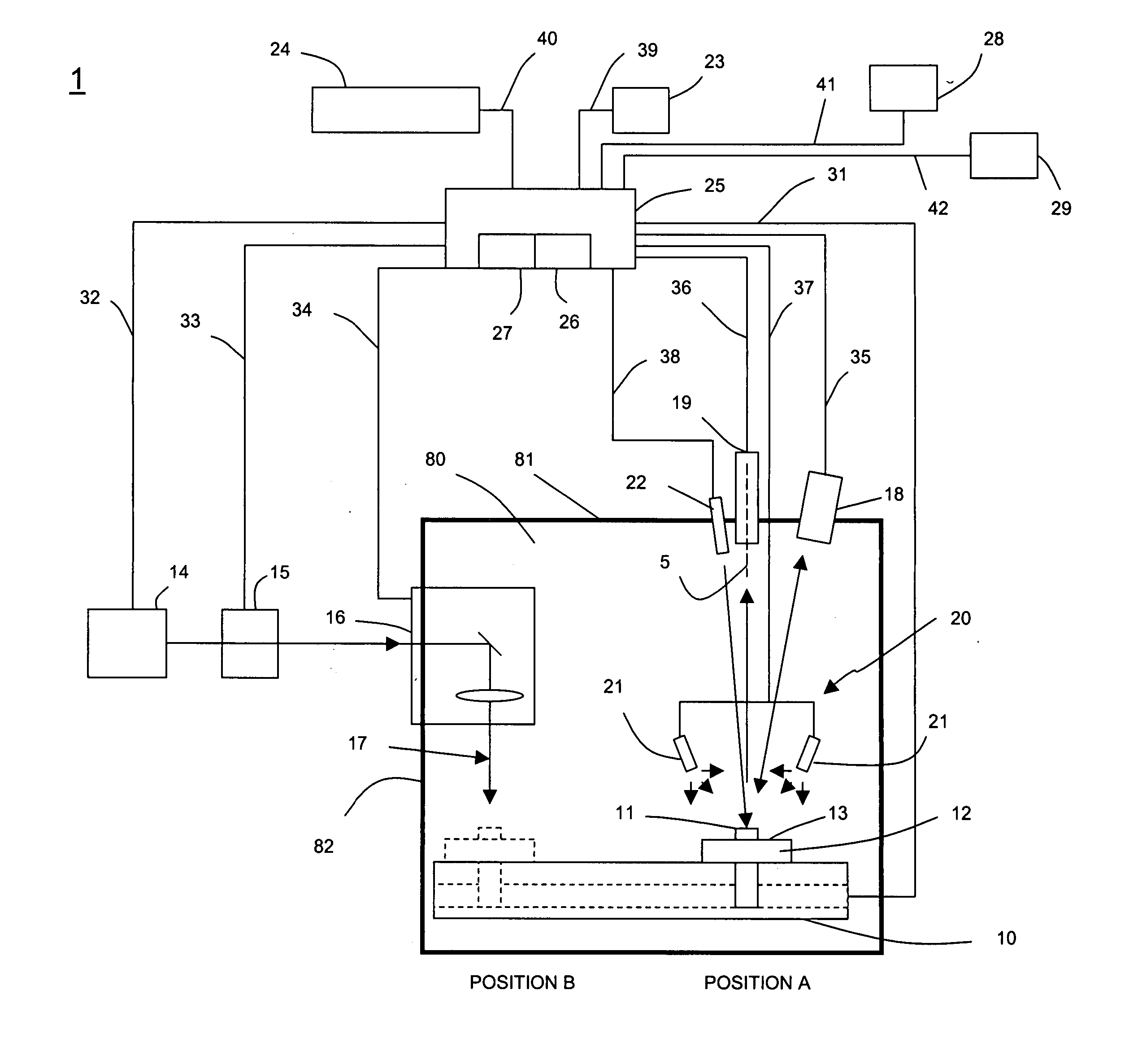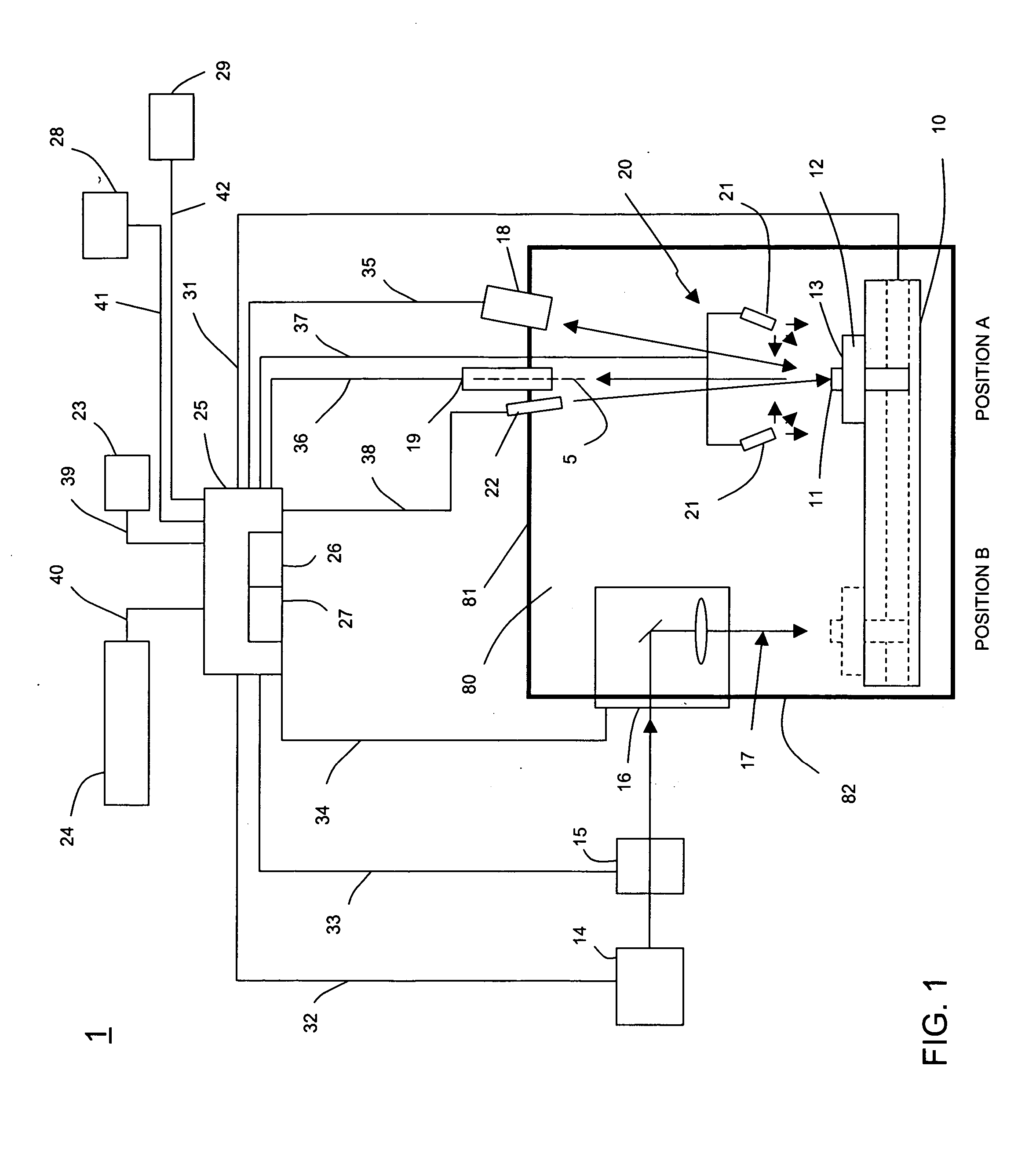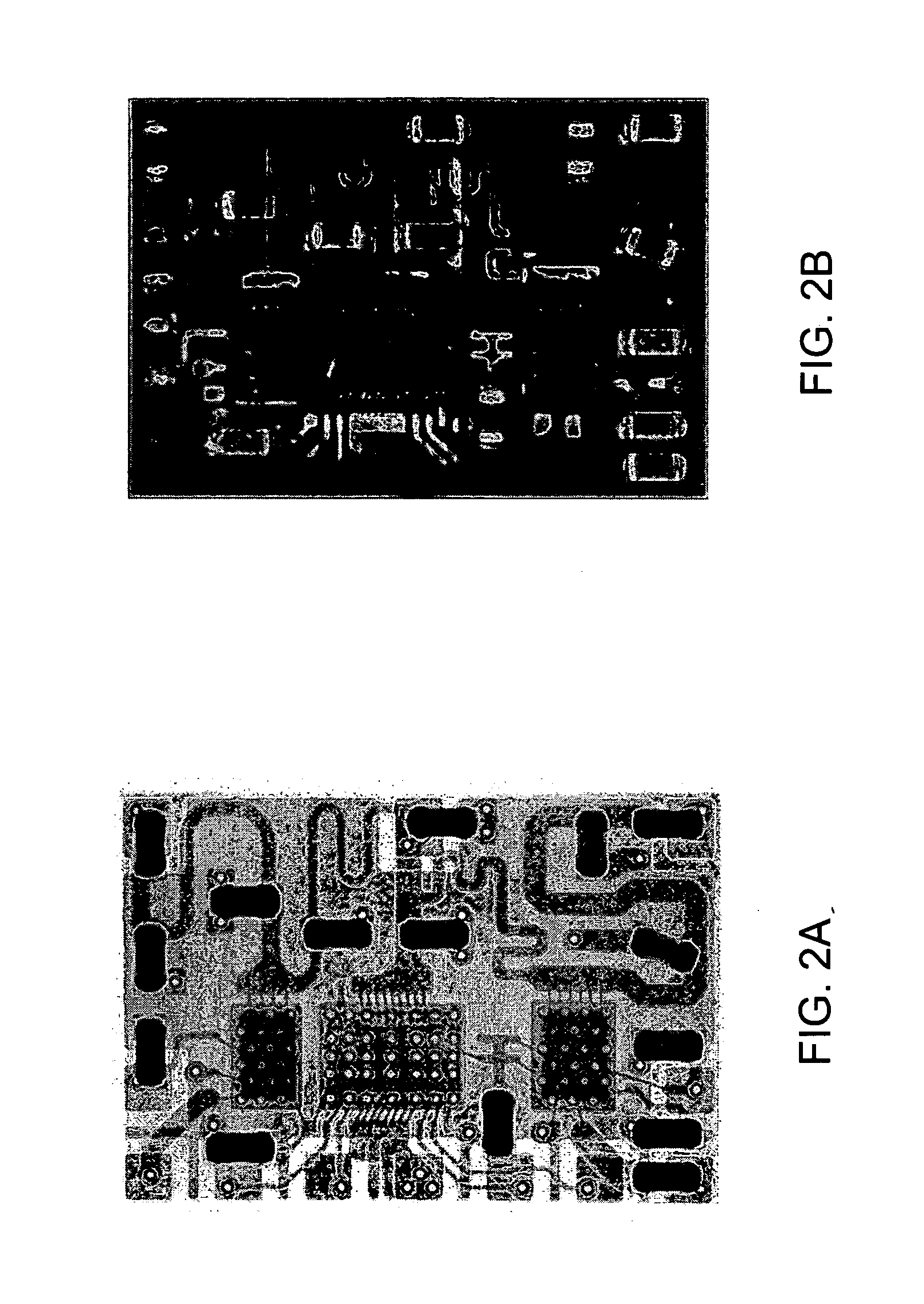Semiconductor failure analysis tool
a technology of failure analysis and semiconductors, applied in semiconductor/solid-state device testing/measurement, manufacturing tools, instruments, etc., can solve the problems of inability to precisely target individual circuit elements, process does not lend itself to opening up regions of irregular shape, and the difficulty of isolating and analysing defects has become a greater challeng
- Summary
- Abstract
- Description
- Claims
- Application Information
AI Technical Summary
Benefits of technology
Problems solved by technology
Method used
Image
Examples
Embodiment Construction
[0027] Failure analysis of packaged semiconductor devices requires that there be minimal damage to the device in order to perform tests and determine the causes of failures. In the past, damage-free decapsulation and cross-sectioning of packaged semiconductor devices by laser ablation has been difficult to achieve, in part because ablation threshold values differ among the various materials encountered in the removal process. Further, the most common package materials are not homogenous in nature. It has also been found that the density of package material can vary significantly as a function of depth from the upper surface of the package. Both the removal rate and the mechanisms of removal in an ablation process can vary depending on material properties and numerous variables associated with the ablation process. Relevant variables include laser wavelength, beam power, pulse width and scan speed. Ablation is also affected by presence of materials such as silica filler, commonly inc...
PUM
| Property | Measurement | Unit |
|---|---|---|
| angle | aaaaa | aaaaa |
| depth-to-width | aaaaa | aaaaa |
| angle | aaaaa | aaaaa |
Abstract
Description
Claims
Application Information
 Login to View More
Login to View More - R&D
- Intellectual Property
- Life Sciences
- Materials
- Tech Scout
- Unparalleled Data Quality
- Higher Quality Content
- 60% Fewer Hallucinations
Browse by: Latest US Patents, China's latest patents, Technical Efficacy Thesaurus, Application Domain, Technology Topic, Popular Technical Reports.
© 2025 PatSnap. All rights reserved.Legal|Privacy policy|Modern Slavery Act Transparency Statement|Sitemap|About US| Contact US: help@patsnap.com



